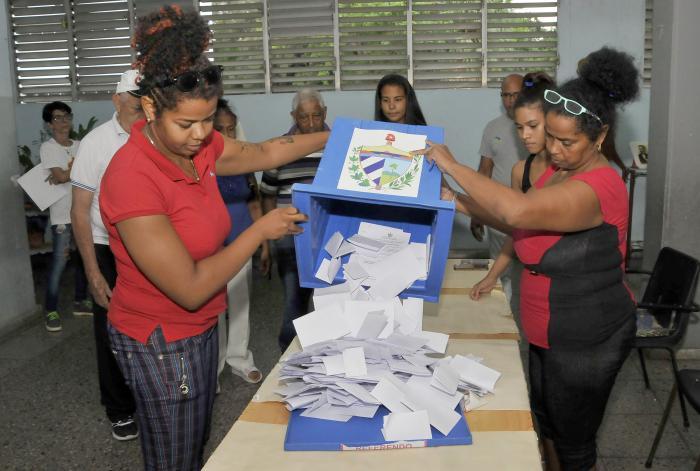The Electoral Law foresees that the vote counting is public so that the members of the electoral bodies of the territory, representatives of political and mass organizations, nominees, and other citizens who wish to do so, whether voters or not, may participate.
The legislation states that the polling station’s president will decide where those observing the vote counting must be located. They must behave correctly according to the solemnity of the moment.
Once the vote counting has begun, it will follow the steps foreseen, that is to separate the valid ballots into two groups: one with the votes for all candidates and the other with the selective votes.
The polling station’s members must verify that the number of valid ballots is equivalent to the sum of both groups before the vote counting starts. The president of the polling station will announce the counting of the selective votes. Once the reading has concluded, the total vote that each of the nominees reached will be added.
According to the law, those who obtain more than half of the valid votes cast in the municipality or Electoral District, as the case may be, are considered the lawmakers of the National Assembly of the People’s Power.
jrr/iff/lam/kmg
CUBA-ELECCIONES
Participación en escrutinio, transparencia en elecciones de Cuba
La Habana, 14 mar (Prensa Latina) El próximo 26 de marzo los cubanos acudirán a las urnas para elegir a los diputados al Parlamento, un ejercicio democrático durante el cual también podrán ser parte del conteo de las boletas.
La ley Electoral prevé que el escrutinio sea público y, por tanto, en este pueden participar los miembros de los órganos electorales del territorio, los representantes de las organizaciones políticas y de masas, los nominados y demás ciudadanos que lo deseen, sean electores o no, una garantía de transparencia en el proceso.
Señala la legislación que el presidente de la mesa del colegio electoral indicará el lugar donde deben ubicarse quienes observen el acto, los cuales deben mantener una conducta acorde con la solemnidad del momento y sin interferir en las funciones de las autoridades.
Una vez comenzado el escrutinio este transcurrirá de manera continua, atendiendo a los pasos previstos, que incluyen la separación de las boletas válidas en dos grupos: uno con los votos a favor de todos los candidatos, y otro con aquellos selectivos.
Los integrantes de la mesa deben comprobar que la cantidad de boletas válidas sea igual a la suma de ambos grupos antes de iniciar el escrutinio, que comenzará por aquellas a favor de todos los propuestos.
El conteo del voto selectivo se dará a conocer a viva voz por el presidente de la mesa y, una vez concluida la lectura, se suma el total de los alcanzados por cada uno de los propuestos.
De acuerdo con la ley, se consideran elegidos diputados a la Asamblea Nacional del Poder Popular quienes obtengan más de la mitad del número de votos válidos emitidos en el municipio o Distrito Electoral, según el caso.
lam/kmg









